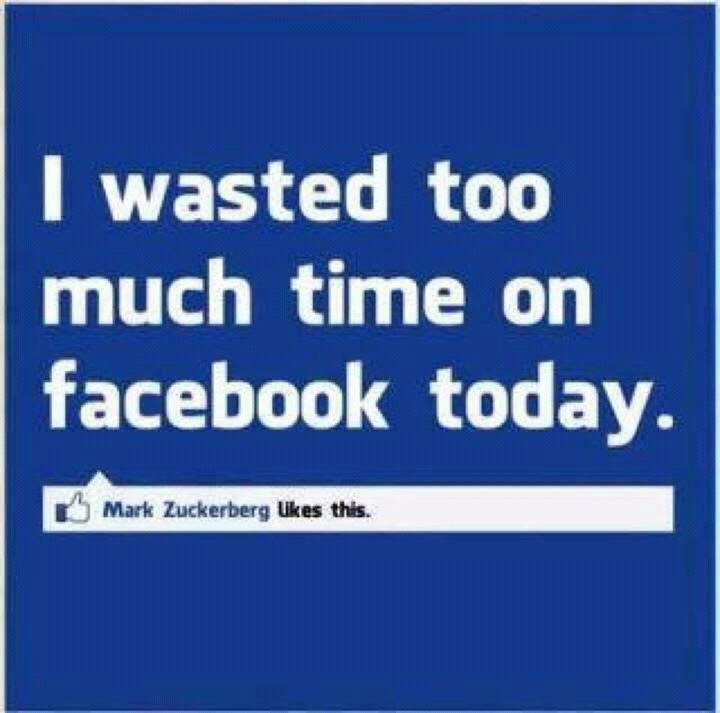“Someone has said that it requires less mental effort to condemn than to think.”
― Emma Goldman
We all have stories. And if you’ve been reading this blog at all, you already know many of mine – I hope you have as much fun hearing them as I do telling them. See, after surviving all these years in the talent trenches, I’ve come to realize just how much amazing material and interesting anecdotes seem to come out of such a seemingly mundane profession.
Yes, recruiters are known to stretch the truth, but if there’s one rule I’ve learned, it’s that the more ridiculous, far-fetched and unbelievable a recruiter’s story might be, the more likely it is to be true. And every one of us has at least one or two real doozies, as my grandmother used to call them.
This story is really no different than the other experiences I’ve put into writing, really; it’s just that actually doing so has taken me a little while, not least because I’ve had to personally come to terms with what happened, and to reconcile myself with such institutional issues as workplace bias, professional discrimination and personal phobia. Hell, no one is perfect, and I can say frankly the best part about screwing up is learning what you did wrong so you never have to experience that failure again.
I’m comfortable with my imperfections, because they’re really what makes me, well, me. They’ve shaped my life and taught me manifold lessons, and sure, they’ve caused me some pain in the past. But I figure by finally opening up and sharing this particular story, and by admitting the errors of my ways, I can gain some kind of absolution.
Or at least, provide the rest of you recruiters out there with a cautionary tale of what not to do when working a recruiting desk.
Now, for some reason, I seem to write a lot about my halcyon days back as a third party recruiter, days that are long gone – but the lessons I learned in that agency are the ones that were the most formative on my development, both personally and professionally. When you’re first starting out, the magnitude of every decision, positive or negative, is magnified, which is why, in my mind, I learned more in my relatively brief tenure in search than I probably have in my extensive in-house career. Time is accelerated when you don’t know what you’re doing, and things come at you faster than you can handle sometimes. Pressure builds, tensions soar, and even the best of us is bound to screw up in the staffing pressure cooker.
Particularly because it’s in those agency and contingency workforce kinds of environments where you run into the most colorful cast of characters. Talk about diversity, when you’re filling high volume, high turnover and low skilled sort of reqs, there’s no such thing as a “traditional candidate” – and while each placement I made on that desk was unique in their own weird way, there’s always been one that’s stood out in my mind – and who’s become even more prominent in the past few months as I watch what’s happening now, in real life, these many years later.
It seems I can’t watch the news or even read headlines these days without thinking of one very special, very different candidate named Carl.

A Biographical Note.
In the past, I’ve been hired to work on some pretty complex profiles and hard to fill roles for a variety of companies; finding those needles in the proverbial haystack is my job as a sourcer and recruiter, after all; it’s what I’m good at, and, lucky for me, it’s what I love to do, too. Hell, to me, there’s nothing more rewarding than locating that next hire and closing down that impossible req after everyone tells you it can’t be done – proving people wrong and beating the odds (and the competition) is one of the best parts of the people business. I hear, “impossible to fill,” and I think, “challenge accepted.”
If I can’t do it, it probably can’t be done. Not to sound like a dick or anything, but I’ve been doing this a while and have gotten to be damn good at this whole recruiting thing. For example, I was once tasked with finding a CCIE (that’s a Cisco Certified Internet Engineer for all you Luddites out there) for a large client in the financial services sector.
This skill set was so in demand the client made it clear that money was no object – and they’d pay whatever price it took to land someone with this experience and expertise. I know, it’s not often that anyone hands an agency recruiter a blank check, but these were the early days of what’s now become codified as “cybersecurity” and morphed from a specialty skillset within IT into a global industry generating hundreds of thousands of new tech jobs (and billions in terms of turnover) each and every year.
While cybersecurity has evolved, back in the day, anyone with a CCIE designation was worth their friggin’ weight in gold; these were the networking professionals sitting unquestionably at the upper echelon of the tech recruiting hierarchy at the time.
They were nearly impossible to find and even harder to lure away from their current employers given the short talent supply, fierce demand and staggering compensation packages CCIEs commanded. Everyone wanted them, and everyone knew the price – and was willing to pay it. Those were the best sort of searches you could ever get working at an agency, and I relished the chance to throw myself into a search that was notoriously difficult, highly complex and extremely targeted.
Even if I had no idea what in the hell I was doing. Somehow, I was going to do it.
I realized quickly that I’d signed up for more than I’d bargained for; while I’d run all the job ads on all the familiar sites and ran a ton of database searches, both internal and external for this skillset, I couldn’t find a single passive candidate or active applicant, period. Crickets. That’s not happened to me before or since. So I did what any rookie recruiter would do – I panicked and started pressing my luck with some resumes that badly missed the mark and arguing about the need for this qualification with my hiring managers wondering when they’d have some candidates to look at. Things were starting to fall apart, and I was starting to get desperate.
That’s when I first met Carl. Well, actually, he first appeared to me magically, showing up in my inbox as a resume that looked like a slam dunk at any employer. Dude even had a CCIE – and somehow, someway, I’d landed a unicorn who actually responded to an online ad and reached out to me proactively, which, like, pretty much never happens for roles with requirements like this one. I mean, he was so perfect, my first reaction was that his applying must be a red flag, since there must be something wrong with him if he was the one reaching out to me. But nope.
Turns out Carl wasn’t just interested in connecting over the phone. Nope. He actually showed up in my office – in person – later in the day, which even then was kind of a weird thing to do. But I wasn’t going to look a gift horse or a CCIE in the mouth, so of course, I instantly dropped what I was doing to meet him.
Apparently he wanted the position so much he thought a face-to-face meeting and the chance to plead his case in person would help his cause – which was highly unnecessary, since his resume alone was enough to get him hired pretty much anywhere.
Good on him, I thought. At least the guy’s got cajones and isn’t afraid to put himself out there.” I admired the hell out of that sort of tenacity – too many candidates could give two shits about you, but here was one who was actually doing the hard sell for once. And I kind of liked it – and him – immediately.
Carl was quite a character, a seasoned Network Engineer who knew the ins and outs of cybersecurity, data breaches and network threats. I mean, we’re talking all-star hacker sorts of shit. He had held his CCIE designation for a number of years now, as he constructed several server firms and built secure data networks for a variety of cutting edge companies, finding his skillset so in demand that he could pretty much write his own ticket at that time. Even during that first conversation, and even though he tried to pitch himself for the role, Carl was so perfect I couldn’t help but go into full on recruiter mode.
You know, when you stop sounding like a human and start sounding like a mouth-breathing idiot, asking asinine questions about what interested them in the role, why they were motivated to make a change, what he needed out of an offer if my client was (inevitably) interested in moving forward, that sort of stuff. He gave me the information I needed, and when he walked out of my office, I started working on what I thought would be a slam dunk placement (and big money, no whammies as far as my commision was concerned).
I composed my write up, appended it on top of Carl’s resume, and submitted it immediately to my hiring manager, pretty damn sure I’d finally cracked the code and found the CCIE we’d spent so long looking for. I was already counting my placement fee in my head (and making it rain, considering where comp would come in at).

Persuasion.
While he’d already dropped by, I asked Carl to come to the office as a formality – also, these intake meetings were company policy, even if we had met before.
Carl was a tall, lanky guy, looked kind of like he used to be a pretty good basketball player in his day. He had sharp features and a quick smile, an easy laugh, and an amazing intellect – in fact, the tech guys Carl met with during the hiring process almost all agreed he was, in fact, “brilliant.” The kind of mind that doesn’t happen along every day – particularly when they’ve also got a CCIE to boot. He had the looks, the skills, and a one of a kind mind – and yet, there was something a little, well, off about Carl.
He was shy and timid, even for a techie, avoiding eye contact and speaking in a voice so quiet I had to strain to hear his carefully worded answers to my commonplace questions. The answers were routine, but my staffing sixth sense told me that not everything with Carl was exactly as it seems. Call it a hunch. But the truth was, he was terribly shy and insecure, and it showed.
This naturally made me concerned about how he’d come across when meeting and interviewing with the client. After all, they were that kind of Wolf of Wall Street kind of financial firm dripping with machismo and materialism, where the car you drove and the watch you wore said all they needed to know about you as a person. Yeah, they were pretty much pricks.
I tried coaching Carl, telling him what I knew about the client, their button up and competitive culture and how they valued not only the experience and knowledge potential hires could bring to the firm, but also their upside – they were looking for what my hiring manager referred to as “the total package.”
They only took A players, making them mediocre under their own hubris and high standards – and I told Carl if he wanted the job, he had to come across as an A player all around, even if his technical acumen and hard skills were more or less beyond reproach. I walked him through interview etiquette, coached him on what to wear and how he needed to present himself to seem like he had the confidence and charisma my client considered so critical in every new hire.
He proved a willing pupil, and even though he showed up looking a bit ragged and acting a bit nebbish, I’d soon gotten him to the point where he could at least pretend to be enough of a badass to impress my clients into making him an offer. He assured me that hard driving culture wasn’t a non-starter; he craved the competition and the chance to work with some of the best in the business. He felt confident his skills would speak for themselves, a sentiment I shared as he finally met with my client in person a few days later.
Of course, just to make sure he was feeling OK about everything and troubleshoot any last minute issues (or issue any last minute edicts or advice), I asked him to stop by the office on his way over to what I was sure was going to be a successful interview. This hire, I was sure, was going to be one hell of a feather in my hat as a recruiter, not to mention one hell of a payday, too. I wasn’t leaving anything to chance, so I put on my white gloves and sent him on his way, holding my breath until the hiring manager immediately called me to start putting together an offer for Carl as soon as possible.
Carl was ecstatic about the opportunity and receiving an offer, and it took minimal negotiation about stuff like start dates and sign on bonuses to get him to sign on the dotted line and start this new chapter in his career – one with tremendous upside, infinite earnings potential and the prestige of working in a key role for one of the best known brands on Wall Street. It was the type of role that any network engineer dreams of, the sort of job and company worth someone like Carl actually going through a recruiter like me to try to land. And we did it.
Still, even as I saw him off into his new role, I just felt something was a little off about Carl, that there was something – I couldn’t describe what – somehow missing from him, if that makes sense. Like even in his biggest triumph, he still wasn’t completely whole – and that while professionally he was on top of the world, for some reason he remained insecure, shy and reserved. I couldn’t figure it out – that is, until I met Carl again about two years later.
That’s the moment everything clicked. Even if nothing made sense.

Love and Friendship.
When you’re a lifelong recruiter, you see so many resumes at some point, finding the ones that are going to work becomes somewhat second nature. There are few feelings better (professionally speaking, at least) than that pit of excitement that you inevitably get in your stomach that moment you finally find that profile you’ve been hunting for – the Chupacabra candidate, the one whose very existence is probably a myth, although it’s the hunt that makes this business so damned fun.
But as much fun as the chase might be, there’s pretty much nothing more rewarding than when luck and circumstance collide and that golden resume somehow shows up seemingly out of nowhere, a placement waiting to happen – whether or not you have an actual job order or not. You know the type I’m talking about. There are certain candidates you can place anywhere, and most of the time, you know it more or less immediately. Those are every recruiter’s favorite kind of candidate, which is why a couple years after the fact, Carl still stood out in my mind as one of my better sourcing success stories.
Even if it really was just dumb luck that our paths happened to cross on the way to a successful placement.
Of course, most resumes are downright forgettable, and I was up to my neck in mediocre, minimally qualified candidates who I’d never dream of trying to submit to one of my clients. They’d do if there were no other options, but our clients don’t hire us to find B or C players. This is why I’ve always been in the habit of setting up an alert after every successful placement so that I’m automatically notified if any of those slam dunk candidates happens, for whatever reason, to submit their resume to one of the manifold paid job board databases or they update their professional profile or experience online (a sure sign they’re probably on the market again).
I almost never got results – these sorts of candidates aren’t the kind of job seekers who generally posted their resumes up on Monster or applied to job ads, really. But if they did, I didn’t want to miss out on making another potential placement – because some candidates, with a recruiting relationship that spans the course of their career, are truly the gift that keeps on giving.
I’ve built a bench of a few of those A-players over the years, but since I do my job, most of the time, my best placements stick around, developing their careers within a company instead of by moving between them (as a rule).

Collected Poems & Prayers.
Retention is every recruiter’s enemy, if you think about it. But finding a candidate a career destination is rewarding enough to make up for the potential loss in recurring placement fees, I suppose.
That’s why I was so surprised one day to actually have one of my many alerts actually return a result one random morning; when I went to look at which candidate had been posting their resume, I figured that it must have been a mistake, since I’d never worked with this particular candidate before. But one quick glance at her resume convinced me that I needed to change that – her experience was fantastic, her credentials impeccable.
As I reviewed the resume one more time, however, I got the uneasy feeling that somehow, I’d seen this resume before, even if I never forget the name or background of any candidate I place (and haven’t yet, even after hundreds of hires). There was something oddly familiar about it, even if I couldn’t put my finger on where, exactly, I’d seen this resume before.
Then, I looked at the candidate’s name again, and the lightbulb immediately went off: this Carla woman was running some sort of scheme and had stolen Carl’s resume. I pulled up Carl’s old record from my ATS, and sure enough, it was an exact match, save the most recent position, where this identity thief had added the position I’d placed Carl in over two years ago.
My first thought was one of disgust – really, who does that sort of shit? Taking somebody else’s resume and passing it off as their own was one of the weirder candidate tricks I’d encountered, but at this point I wasn’t willing to put these sort of hijinks past many of the job seekers I worked with.
They’ve all got their strategies and workarounds – this one, I thought, was just particularly nefarious, considering she was potentially damaging Carl’s reputation by applying for jobs and sharing his resume with the same recruiters and employers Carl would likely encounter in this fairly insular industry. I just didn’t want him to get burned by this imposter, and figured I’d give him the heads up.
Sure, it’d been months since we’d spoken, but like most of my candidates, I’d send him a quarterly check up e-mail, and he assured me things were going great – in fact, he even referred me a few searches or professional connections over the months, but we’d lost touch since he last left the job market. save these everyday exchanges. I figured I’d do him a solid and reveal this professional phoney for the fraud she was by playing along and actually pretending I was interested in her for a “hot opening” I had at a credit card processing center that I assured her she’d be perfect for.
I’ll admit, this was a lie – and a trap, albeit one done for completely altruistic purposes. I figured I’d catch her red handed, see her reaction to my unmasking of her assumed identity, and maybe even get another good story out of what was sure to be an interesting encounter, to say the very least. I wanted to call bullshit to her face, and let her know that her sick little game was officially over. I couldn’t wait for that moment she realized she’d been found out – or what she’d do or say. The only thing I knew was that I was going to have me some catfish for dinner. Or so I thought.
Everything went according to plan; she immediately responded and agreed to meet at my office for an in person later that week. I showed up more prepared than I probably ever have for another informational interview, coming in with both barrels loaded: freshly printed copies of her resumes and the one I had from Carl, which I was planning on presenting along with a well rehearsed little speech I’d been working on about how recruiters aren’t as dumb as she thinks, or at least, this one wasn’t. Or some shit to that effect.
I forget the exact details, because when I walked into the room, the first thing I heard when I walked in to confront Carla was, “Hey, Derek. It’s been a while.”
Alright. What the hell was going on here?

Lady Susan In Mansfield Park.
Then – I know this is passe these days, but this was a different time – I realized that Carl and Carla were the same person.
I feel like an asshole now, but I couldn’t help but just sit there and stare, with my jaw in the floor, trying to figure out how that awkward, timid geek I’d met a few years ago had suddenly metamorphosed into a self-assured, confident and frankly fairly good looking woman. Carla was patient with my stupid ass questions – thankfully – and she explained how she’d grown her hair out, had surgery and undergone comprehensive hormone replacement to transition from male to female.
Turns out when Carl moved jobs, he also made the decision to finally give into what he’d always been hiding and use it as an opportunity to change identities, too. She told me she’d always felt trapped in a man’s body, that she felt she was supposed to be a woman and this, not the strange guy I’d met before, was who she really was.
Carla went on to let me know just how much pain she’d gone through – physically and emotionally – to make this transition, and just how much freedom she’d finally found as a result of becoming her best self, even if it cost her some friends and family. If they weren’t going to accept her, then she didn’t need them in her life, which she felt was really just starting out since she’d finished her full transition. She was a different person on the outside, but the same person I knew before – only happy now, for a change.
I don’t know why I was so shocked, or why my instant response was with an angry outburst wondering why she couldn’t have communicated this to me – I mean, this was pretty big news, and I thought we had a good enough relationship where she’d at least give me a courtesy call explaining the situation – I’d have been cool with it, I assured myself.
But it was probably costing her a promising career and certainly most of the clients I worked with would never hire her, which made me wonder why she hadn’t at least sought out my input on the severe repercussions this would have on her hireability.
I know. What a stupid, selfish thought to have. I realized almost instantly that my reaction was not the right one, that I was judging a candidate on the basis of what my clients were looking for instead of who she truly was, and what truly made her happy. For Carla, and so many other people out there, that has nothing to do with work, no matter how much recruiters would like to believe that our careers are the be-all, end-all of our entire identities.
Not so in this case, and in being so quick to pass judgement on her for purely selfish reasons, I realized that I was basically no better than any other bigot out there, a self-serving, intolerant and irrational narcissist whose entire worldview was confined to my own reflection.
But I quickly figured out that not only was Carla looking for a new job, but she could probably use my help now more than ever, since she confided this would be her first search since the transition. And as soon as we started talking about next steps and open opportunities and all of that other standard recruitment shop talk, who she was immediately ceased to matter.
Like any candidate, I was only concerned about what she was capable of becoming – my clients were looking for growth potential, someone who wasn’t afraid of backing down from a challenge or a difficult situation, and in this, Carla might just have been the most qualified candidate I’ve ever come across.
When I asked her about what she was looking for in her next role and how I could help, I could see a look of – well, almost thankfulness – in her eyes, a look that said my desire to deal with her as a job seeker rather than as a transgendered person meant more to her than any other support or guidance I could have given her.
I got the information I needed from her, and it only took me about a week to get her placed into a great new gig at a killer company who was grateful to have the chance to score such a world class hire, and were equally grateful to me for looking out for their best interests and facilitating the introduction.
No one asked about her past, and even if they did, I’m pretty sure no one would have cared. The thing was, no matter what gender Carla identified with, she was still one hell of an engineer. Period.

Sense and Sensibility.
Now, I’m no psychologist – I have only a perfunctory and passing knowledge of the neurological and biological processes working together to make human beings, well, human. I guess I’ve always been lucky enough to take my gender and sexuality for granted, because if there’s one thing I’m pretty damn certain of at this point in my life, it’s that I’m a heterosexual male – which isn’t nearly as much fun as it sounds, particularly when you’re dating.
Trust me. But I’m cool with that, just like I’m cool with the fact that not everyone out there has the same proclivities and preferences as I do. If we were all the same, we’d probably be pretty boring – and recruiting wouldn’t be nearly as much fun, either.
My philosophy, and one that’s served me fairly well over the years, is that you’ve got the right to be you, and as long as you don’t do anyone any harm, I love you no matter who in the hell you are or what you’re about, because ultimately, I’m a humanist – and think you’ve almost got to be to work in this strange industry of ours.
Not too long ago, Katrina Kibben, one of this fine publications’ editorial masterminds and a seriously all around kick ass individual, gave me one of the greatest compliments I’ve ever received: she told me that I’m one of the few men she knew who she considered a feminist.
I don’t know why, but I was deeply touched by that. I’ve never thought of myself as a feminist before, but was honored to be perceived that way simply because I’ve always operated from a place that what you do isn’t who you are, and to accept candidates for what they can do professionally instead of judging them based on their personal past. That in no way impacts job performance or placeability, and frankly I could give two shits about what gender you are if you’re a good candidate, a decent person and not a total pain in the ass to work with. That’s all I ask for, really.
I find it deeply ironic that gender identity has become one of the hottest of hot button issues of our time, with every news cycle seemingly stuffed with banal news about bathroom regulations or some new restriction placed on an entire subset of the population by disguising their prejudice and ignorance as a religious issue instead of an ethical one.
As mentioned before, I’m a straight male, and the first rule of going to the public bathroom for us is that if you see someone else’s junk when you’re in there, you fail. Keep your eyes straight ahead, don’t look down, and take care of your business. Let the person next to you do the same, and everyone wins. This is as true in the boardroom as it is the bathroom, by the way.
We talk a lot about diversity, but as long as we focus on visible differences and quotas instead of shared similarities and experiences, we’re missing out on what really matters. Because if your employees aren’t free to be themselves at work, they’re never going to do their best work. Enough is enough. If you’re still holding onto petty misconceptions or outdated stereotypes, you’d better reconsider this whole recruiting thing.
Because the one thing this profession doesn’t have any room for is any more bigotry or bias. The hiring process already has enough of that built in already. #TrueStory
 About the Author: Derek Zeller draws from over 16 years in the recruiting industry. The last 11 years he has been involved with federal government recruiting specializing within the cleared Intel space under OFCCP compliance.
About the Author: Derek Zeller draws from over 16 years in the recruiting industry. The last 11 years he has been involved with federal government recruiting specializing within the cleared Intel space under OFCCP compliance.
He has experience with both third party agency and in-house recruiting for multiple disciplines and technologies. Using out-of-the-box tactics and strategies to identify and engage talent, he has had significant experience in building referral and social media programs, the implementation of Applicant Tracking Systems, technology evaluation, and the development of sourcing, employment branding, military and college recruiting strategies.
You can read his thoughts on RecruitingDaily.com or Recruitingblogs.com or his own site Derdiver.com. Follow Derek on Twitter @Derdiver or connect with him on LinkedIn.









 Candidates are your customers and they shop for jobs much like they shop for products. There could be a lot of reasons those candidates are not applying for your position.
Candidates are your customers and they shop for jobs much like they shop for products. There could be a lot of reasons those candidates are not applying for your position.

 I’ve been a recruiter for 14 years now, and during that time, have been able to witness the evolution of the applicant tracking system first hand. Over the course of my tenure with my long time employer, I’ve been subjected to at least four different ATS solutions.
I’ve been a recruiter for 14 years now, and during that time, have been able to witness the evolution of the applicant tracking system first hand. Over the course of my tenure with my long time employer, I’ve been subjected to at least four different ATS solutions.
 Granted, learning our new ATS hasn’t always been easy. It’s taken me a full on year – more, even – to fully grasp and understand how, exactly, to use this system. That investment has paid off – now that I know how to actually align my system of work with my system at work, I use it for pretty much everything.
Granted, learning our new ATS hasn’t always been easy. It’s taken me a full on year – more, even – to fully grasp and understand how, exactly, to use this system. That investment has paid off – now that I know how to actually align my system of work with my system at work, I use it for pretty much everything.
 About the Author: Bahar Studdard has been an agency recruiter for over 14 years, working in the transportation, manufacturing and logistics fields in staffing. She works remotely, supporting 12 offices in 4 states (Colorado, Albuquerque, Oklahoma & Wyoming).
About the Author: Bahar Studdard has been an agency recruiter for over 14 years, working in the transportation, manufacturing and logistics fields in staffing. She works remotely, supporting 12 offices in 4 states (Colorado, Albuquerque, Oklahoma & Wyoming).
 There are moments you realize you just need to shut up and stop talking. Whether it’s a heavy sigh or a not so subtle eye roll, that casual glance at a watch or a cell phone or – worst case scenario – that awful instant internalization that happens after you know you’ve just said something you really shouldn’t have (and instantly regret it).
There are moments you realize you just need to shut up and stop talking. Whether it’s a heavy sigh or a not so subtle eye roll, that casual glance at a watch or a cell phone or – worst case scenario – that awful instant internalization that happens after you know you’ve just said something you really shouldn’t have (and instantly regret it). Nowhere is this more true than in the job interview. Now, obviously, most candidates come in having carefully rehearsed their best responses to
Nowhere is this more true than in the job interview. Now, obviously, most candidates come in having carefully rehearsed their best responses to 

 Point number one, obviously, is a given. You’ve read their resume, spoken with them on the phone – you already know damn well they’ve got the skills required to do the job by the time they sit down with you for an in person. If not, Google their name and there’s a high probability you can check that one off the list.
Point number one, obviously, is a given. You’ve read their resume, spoken with them on the phone – you already know damn well they’ve got the skills required to do the job by the time they sit down with you for an in person. If not, Google their name and there’s a high probability you can check that one off the list.
 For me, interviewing is really just about what might be better called “casting.” You’re looking for chemistry and fit with the existing team while still getting a feel for that unique “X Factor” each candidate brings to the table (whatever that might be).
For me, interviewing is really just about what might be better called “casting.” You’re looking for chemistry and fit with the existing team while still getting a feel for that unique “X Factor” each candidate brings to the table (whatever that might be).

 When we talk about experiences, what often pops into your mind is something magical or mythical. A vacation to a foreign land, a sci-fi book that takes place in a different world. Something we’ve never experienced.
When we talk about experiences, what often pops into your mind is something magical or mythical. A vacation to a foreign land, a sci-fi book that takes place in a different world. Something we’ve never experienced.






 in the top right corner
in the top right corner

 When I was recruiting, the biggest lie I ever told candidates was that salary is dependent upon experience.
When I was recruiting, the biggest lie I ever told candidates was that salary is dependent upon experience.



 A year or so ago, I saw an internal recruiter from Hewlett Packard bragging on LinkedIn about how successful he and his team had been in filling open job requisitions. He even provided stats.
A year or so ago, I saw an internal recruiter from Hewlett Packard bragging on LinkedIn about how successful he and his team had been in filling open job requisitions. He even provided stats.

 Mitch Sullivan is (still) a Recruiter and sometimes helps other recruiters win retained work, if you ask him nicely.
Mitch Sullivan is (still) a Recruiter and sometimes helps other recruiters win retained work, if you ask him nicely.

 2. Bots
2. Bots
 She wants to make sure that there is some element of work-life balance, stable benefits and three weeks vacation, so she goes to Hired or Woo spends a few minutes answering some questions. Then goes to
She wants to make sure that there is some element of work-life balance, stable benefits and three weeks vacation, so she goes to Hired or Woo spends a few minutes answering some questions. Then goes to 

 I’m bored, and it’s all recruiting’s fault.
I’m bored, and it’s all recruiting’s fault.
 I mean, look at yourselves, recruiters. We’re all so damned polite. We stand on ceremony, all the time. We don’t joke with clients, candidates or even our colleagues because we fear that something will be misconstrued or misunderstood and we’ll end up with a massive lawsuit on our hands.
I mean, look at yourselves, recruiters. We’re all so damned polite. We stand on ceremony, all the time. We don’t joke with clients, candidates or even our colleagues because we fear that something will be misconstrued or misunderstood and we’ll end up with a massive lawsuit on our hands.

 About the Author: Salma El-Wardany, Head of Marketing, Recruitment Entrepreneur cut her teeth in recruitment at a global Plc, working in business development to win new clients and accounts into the company. She gave up corporate life in favour of the startup world, specifically recruitment startups.
About the Author: Salma El-Wardany, Head of Marketing, Recruitment Entrepreneur cut her teeth in recruitment at a global Plc, working in business development to win new clients and accounts into the company. She gave up corporate life in favour of the startup world, specifically recruitment startups.